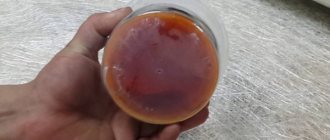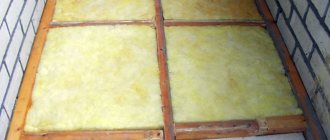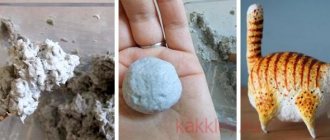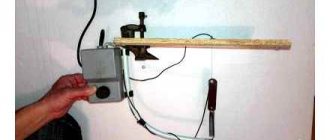What is epoxy resin?
Epoxy resin is a two-component thermosetting liquid polymer.
But, avoiding chemical terms that are incomprehensible to novice craftsmen, we can say that epoxy resin is a product consisting of two liquid components A and B (where “A” is a resin and “B” is a hardener), mixing which in certain proportions starts hardening process with heat release.
Epoxy resin for jewelry
As a result, liquid resin poured into silicone molds, formworks, or on top of blanks turns into hard plastic-like decorations, paintings, trays, coasters, and even tabletops.
Crafts manufacturing technology
Epoxy resin is a very capricious, but popular material for home and extracurricular creativity. There are several basic techniques that are used to create original crafts:
- One of the most well-known technologies involves pouring a thick, hot mass into prepared molds. The forms can be either homemade or purchased from craft supply stores. The material used to make molds can also vary greatly (silicone, plastic, rubber, metal, plaster).
- As larger-scale projects, pouring a decorative tabletop is known. At the same time, the master has the opportunity not only to use a solid canvas for the base, but also to restore damaged wooden tables by pouring resin.
Polymer resin is quite often used for interior decoration, for example, kitchens or bathrooms.
To carry out such work, a large amount of consumables is required, as well as certain experience and dexterity of the master.
Is resin harmful?
After hardening, the resin is completely harmless for contact with human skin: you can safely wear jewelry made from resin or touch it. You can read more about this in the article about the safety of our resin: How dangerous is epoxy resin ?
However, the situation with food is more delicate: only some resins have a certificate for safe contact with food (only cold) products (for example, our Art Pro 2.0 ):
- -15%
Medium-thick epoxy resin for painting “Art-Pro 2.0” 3.32 kg
4660 rub. 3965 rub. Add to cart
- Grade 5.00 out of 5
Medium-thick epoxy resin for painting “Art-Pro 2.0” 830 g
1230 rub. Add to cart
- Grade 5.00 out of 5
Medium-thick epoxy resin for painting “Art-Pro 2.0” 1.66 kg
2370 rub. Add to cart
- Medium density epoxy resin for painting “Art-Pro 2.0” 332 g
710 rub. Add to cart
But in liquid form, the resin is toxic : for people, animals and the environment in general. Working with epoxy resin during mixing and catalysis (hardening process with the release of heat) should take place in a well-ventilated/ventilated area and strictly in personal protective equipment : a respirator mask, goggles, gloves, etc., especially if a person has a tendency to be allergic to “chemistry”. In terms of harmfulness, the process of working with resin can be compared to paint and varnish work.
We offer the following range of protective equipment:
- Not available
Rating 5.00 out of 5
Set of nitrile gloves
From 160 rub. More details
- Not available
Disposable polyethylene protective apronFrom 60 rub. More details
- Open safety glasses
180 rub. Add to cart
- Disposable polyethylene sleeves
From 75 rub. Choose …
- Respirator Jeta Safety J-SET 6500
2399 rub. Choose …
- Respirator Jeta Safety J-SET 5500
2299 rub. Choose …
Basics of safe work
Although the name of the substance contains the word “resin,” it contains no natural components. If you come into contact with epoxy, there is a danger of being harmed by the fumes released. Therefore, it is necessary to observe safety precautions:
- work with gloves;
- wear a respirator to prevent inhalation of vapors;
- arrange ventilation in the room;
- limit access of household members to the place where the work process takes place, especially children and animals;
- do not be distracted while working.
In order not to spoil the surface of the table, you need to place a special board or film.
Under what conditions can you work with epoxy resin?
Work with resin should be carried out in a well-ventilated/ventilated area (away from kitchens and living rooms) with (important!) low humidity at a temperature not lower than 20 and not higher than 25-27 ° C. The resin is very afraid of moisture, so it should not be in the molds/blanks, otherwise cloudy stains and other defects may appear on the surface of the product after hardening. Therefore, it is also not recommended to work with resin during or after rain or near bodies of water.
Art Pro 2.0 epoxy resin , which has good moisture protection.
Pouring countertops
One of the most interesting methods of making crafts is to pour tables. In this case, both a new wooden base and old boards or a table can be used in the work. The process of preparing the working mass is carried out according to a universal scheme. The following are the instructions:
- The prepared table is carefully inspected for the presence of rot or mold, knots or nicks, sharp edges and the condition of the cuts.
- The wood is laid out in a clean, dry room (usually a workshop) according to the chosen pattern. If desired, the master can perform wood carving, giving the future craft the desired relief.
- The first layer, which is applied to the surface of the countertop, acts as a primer. In this case, all defects, irregularities, cavities and cracks are filled. The first layer must be heated evenly for 2 hours so that air can escape from defects and cracks.
- The next step is to create a form for filling. The table blank is placed in this form. The resin strips (transparent sections of the tabletop) can run in the center or along the edges, depending on the owner’s wishes.
The base coat is poured over the first primer layer, and only after the base has hardened, the second finishing fill is performed. After the polymer has completely hardened, wipe the surface of the furniture with a clean, dry cloth to remove any cloudy deposits.
Shall we secure it?
- Use personal protective equipment when working with resin: respirator mask, goggles, gloves, etc.
- Mix epoxy resin in strict proportions using an accurate scale . Stir for 3-5 minutes, scraping down the sides and bottom of the container. Work in a well-ventilated/ low-humidity at temperatures not lower than 20 and not higher than 25-27 °C.
- When pouring epoxy resin into molds or workpieces, avoid wet surfaces and do not add water-based dyes to the resin.
- Air bubbles trapped in the resin during mixing can be removed from the surface of the pour using a small stick manually or using the flame of a gas burner (strictly according to the rules).
The Art Resin team is always ready to answer all your questions in the comments











